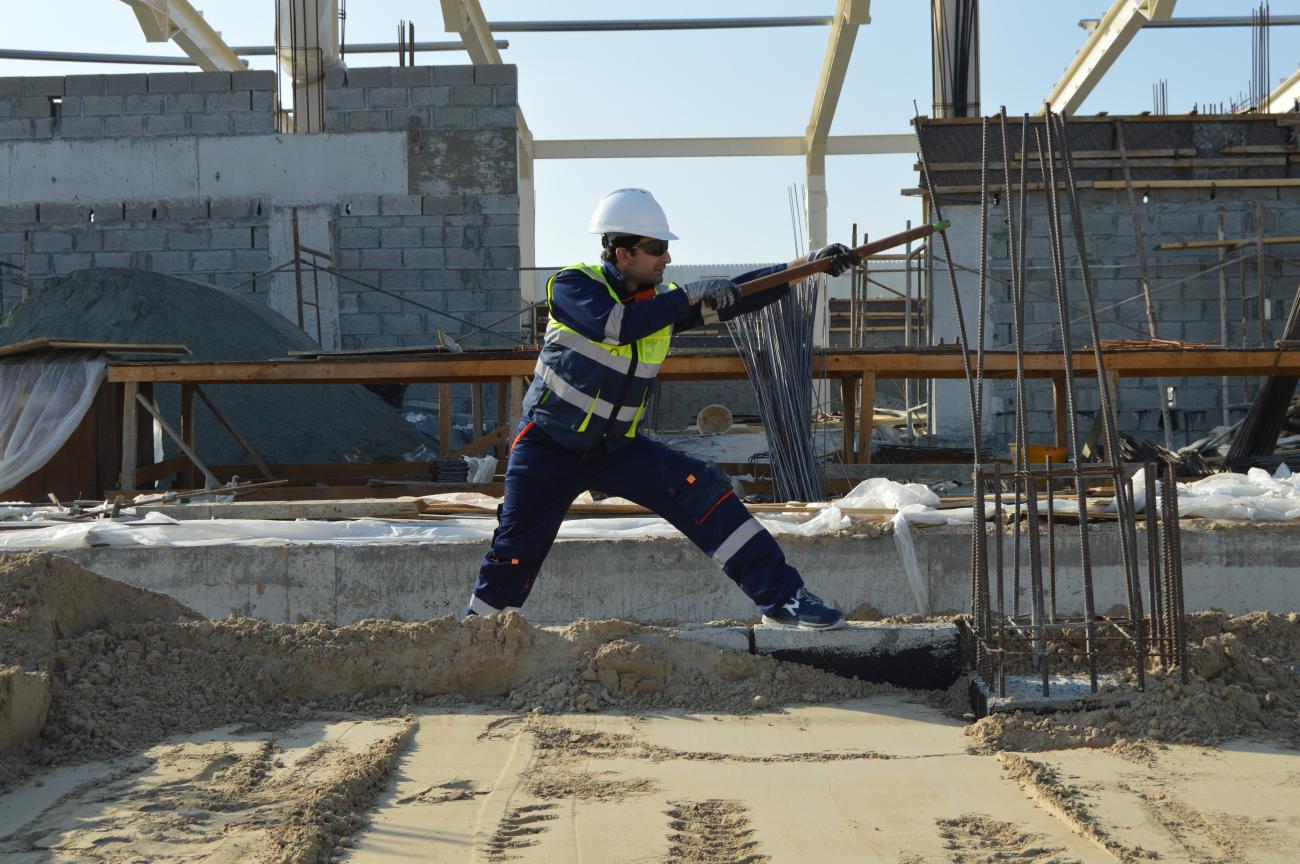In August 2022, Congress passed the Inflation Reduction Act (IRA) to fight the climate crisis, grow domestic clean energy production, lower prescription drug costs, expand access to affordable health care coverage, and raise taxes on high-earning corporations—all to rebuild the US middle class for families, workers and businesses. Within this massive bill come numerous opportunities for small businesses—from accessing solar energy to electric vehicles and more.
The IRA will work to reduce the United States’ share of global greenhouse gas emissions by approximately 40%, or 1 gigaton, by 2030. According to 126 leading economists—including seven Nobel Laureates, two former Treasury Secretaries, two former Federal Vice Chairs and two former Council of Economic Advisors Chairs—the Act will also reduce the deficit to “help fight inflation and support strong, stable economic growth,” per the White House.
Below are resources that the Green Business Network will update as more information emerges on how the IRA can support small business.
Clean Energy
With the IRA, small businesses can benefit from savings on installing solar panels and other energy efficient projects. Overall, there’s a potential for ~70% tax savings in various amounts and ways by utilizing clean energy.
Check out these small business tax credits for energy efficiency:
- 30% tax credit for installation of solar PV systems, ranging for 10 years (2022-2032) with no maximum that can be claimed.
- Make it in America: This new provision offers tax credits for the use of American-made equipment for clean energy production.
- There are bonus credits for businesses that pay workers a prevailing wage* and use registered apprenticeship programs.
- 10% tax credit for clean energy projects in underserved communities.
- Per the White House, these projects must be “established in communities that have previously relied upon the extraction, processing, transport, or storage of coal, oil, or natural gas as a significant source of employment, creating jobs and economic development in the communities that have powered America for generations.”
- 20% tax credit for solar projects on federally-subsidized affordable housing projects and a 10% bonus credit for solar projects in low-income communities.
- $5 per square foot to support energy efficiency improvements that deliver lower utility bills.
- Expands the Rural Energy for America program, providing rural agricultural producers with clean energy and energy efficiency upgrades.
- This is estimated to reach over 41,500 small businesses and farms, as well as over $9 billion for rural electric cooperatives.
- $60 billion to on-shore clean energy manufacturing in the U.S. across the full supply chain.
- Grants and tax credits to reduce emissions from industrial manufacturing processes, including almost $6 billion for a new Advanced Industrial Facilities Deployment Program to reduce emissions from the largest industrial emitters like chemical, steel and cement plants.
- $10 billion investment tax credit to build clean technology manufacturing facilities, like facilities that make electric vehicles, wind turbines and solar panels.
- $2 billion in grants to retool existing auto manufacturing facilities to manufacture clean vehicles.
To get started on your business’ clean energy journey, check out the Green Business Network’s guide on How to Improve Building Energy Efficiency Rating in the Office and at Home.
*According to the US Department of Labor, a prevailing wage is the average wage paid to similarly employed workers in a specific occupation in the area of intended employment.
Energy Efficient Vehicles
If your business requires transportation, consider switching to energy efficient vehicles if you haven’t already.
The IRA offers a tax credit “covering 30% of purchase costs for clean commercial vehicles, like electric and fuel cell models.”

Agricultre, Manufacturing, and Construction Industries
The agriculture and manufacturing industries will especially see benefits from the Inflation Reducation Act.
Grants funded at $3 billion will be used to support the purchase and installation of zero-emission equipment and technology at ports. The Methane Emissions Reduction Program, meanwhile, will reduce the leaks from
the production and distribution of natural gas.
For manufacturing and construction projects, the Environmental Product Information Program will provide $250 million to support the development and enhanced standardization and transparency of environmental product declaration for construction materials and products.
For the agricultural industry, $40 billion is earmarked for agriculture, forestry and rural development, and $300 million specifically for a carbon sequestration and greenhouse gas emissions quantification program.
Healthcare
Running a business is hard enough without worrying about healthcare costs for yourself and your employees. The IRA also has several improvements to healthcare access and affordability that will directly benefit small business owners.
The first benefit is the extension of the American Rescue Plan’s tax credits for Affordable Care Act (ACA) plans through 2025. According to the White House, 25% of working-age adults enrolled in ACA are small business owners or self-employed and the uninsured rate for self-employed adults has dropped from 30% to 20.5% between 2013 and 2019.
Another way the IRA is helping small business owners afford their healthcare is by lowering prescription drug costs for seniors. This is key because a 2021 SCORE survey found that while 21% of the US population is over 55, older Americans represent 50.9% of all business owners.
With the passage of the IRA, yearly prescription drug costs will be capped at $2,000 and monthly insulin supplies will be capped at $35. It will also provide access to an increased number of free vaccines, including shingles and beyond.
New Jobs and Equitable Labor Standards
Estimates show the Inflation Reduction Act will create 9 million new jobs over the next decade—more than 6 million jobs from grants, loans, and tax credits and nearly 3 million jobs stimulated by new loan guarantee authority for the U.S. Department of Energy.
The breakdown of these new jobs and which sectors they will be in is as follows:
- 5 million jobs in clean energy
- 900,000 jobs in clean manufacturing
- 400,000 jobs in clean transportation
- 900,000 jobs in efficient buildings
- 150,000 jobs in environmental justice
- 600,000 jobs in natural infrastructure

What is more essential to these new jobs and implementing and investing in the IRA's policies, as outlined by the BlueGreen Alliance, is an improvement to the workplace itself and how labor can become more equitable.
It can do this by:
- Incentivizing the use of union labor
- Mandating that workers are paid a fair wage
- Utilizing union apprentice, pre-apprenticeship, and other union-affiliated training programs
- Ensuring equitable access to the jobs the IRA will create
- Prioritizing workers and communities most in need
- Building pathways into good-paying careers for workers across the nation
IRA Benefits by State
The White House released state-by-state fact sheets for the IRA; see the specific benefits that pertain to your state.
Below is a snapshot of benefits highlighted by the White House for Michigan. We selected Michigan as an example because Detroit is among the poorest cities in the country and because of Michigan’s historic automotive industry and the region’s potential to become a clean economy leader. The state also has significant rural areas that stand to benefit. And given the Flint, MI water crisis, an emphasis on environmental justice in Michigan is vital and the IRA takes steps in that direction as well.
Here are some of the benefits Michigan will gain with the IRA:
- 50%-100% of rebates for installation of new electric appliances, including heat pumps, stoves, and more.
- Rebates for households to make repairs and improvements in single-family and multi-family homes to increase energy efficiency.
- Support for transportation projects and plans to protect against extreme weather, such as flooding or heatwaves, through a new Neighborhood Access and Equity Grant Program.
- Clean energy job creation through tax credits for the solar, wind, storage, and other clean energy industries
- Environmental justice block grants, investments for cleaner buses and trucks, and a Clean Energy and Sustainability Accelerator that will prioritize emissions-reducing projects in disadvantaged communities and fund state and local green banks like Michigan Saves.
- Support for climate-smart agriculture practices that will help Michigan’s 46,000 farms lead on climate solutions and reward their stewardship.
How Do I Find Out More About These Small Business Resources in My Region?
- The Green Business Network will continue to update these pointers for finding ways the IRA can support your business: Set up Google alerts: "Inflation Reduction Act," "small business incentives," "climate change incentives," etc. Add the name of your state, city and county to the keywords.
- Reach out to your state and federal legislator's office—ask for them to conduct a town hall or host a webinar to explain how businesses can take advantage of the IRA.
- Many regional chambers of commerce also track and share this kind of information with their members, so subscribe to their newsletters. If you are a member, ask them to provide information or host a webinar/workshop.
- Join the Council for Community and Economic Research to gain access to their state incentive directory.
- Stay tuned for how the new, national Green Bank called for by the IRA, can support your business’ clean energy projects.
- The US Department of the Treasury announced additional states and up to $1 billion funding for the State Small Business Credit Initiative.
Thanks to Gloria Ware, the owner and founder of certified Green Business Network member Get The Bag, for these suggestions.
The Inflation Reduction Act is a vast bill with many different components. Read Green America’s statement on the Act and visit WhiteHouse.gov for more information.
Updated February 2023.



